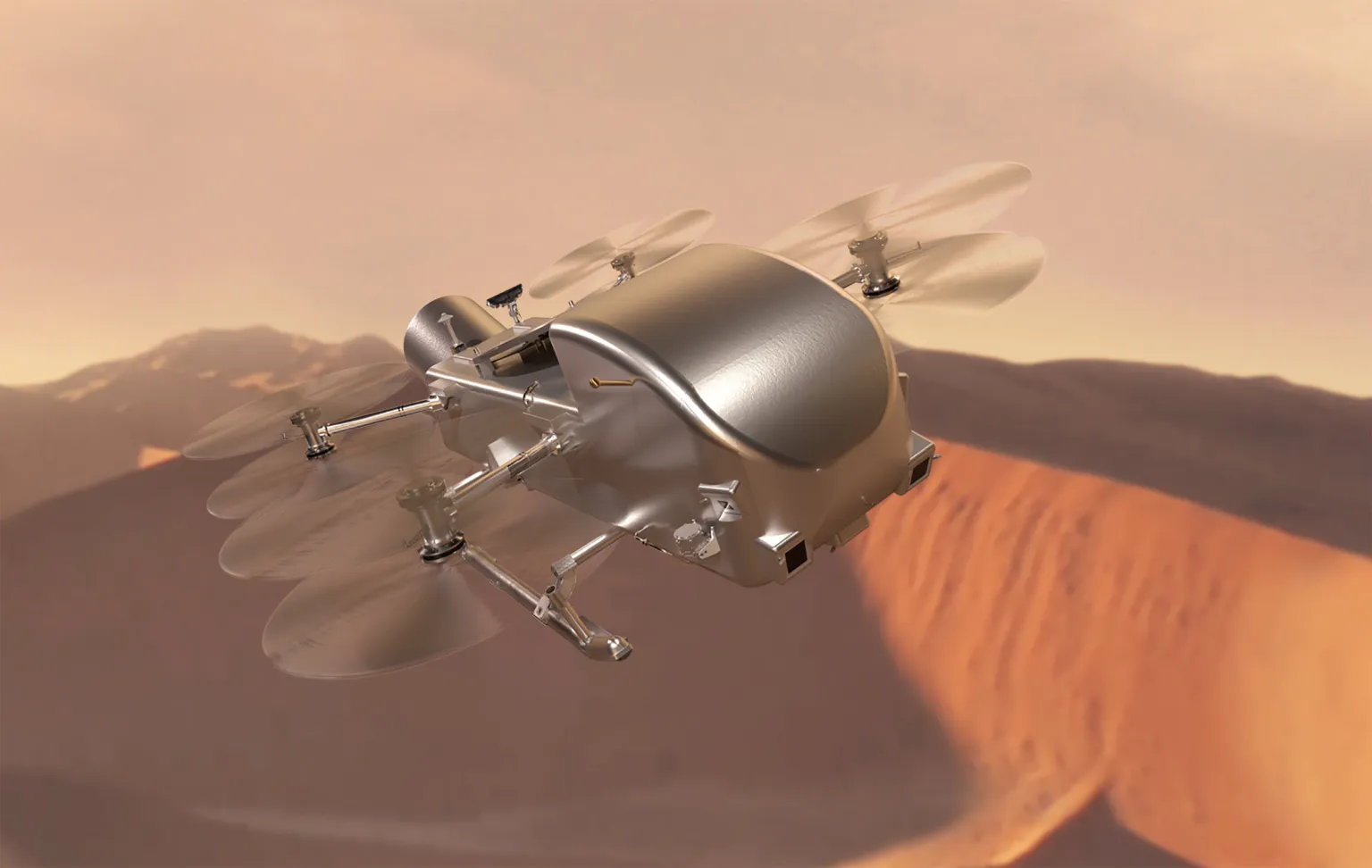Dragonfly

Dragonfly may be the most ambitious science mission NASA has ever attempted: sending a car-sized, nuclear-powered octocopter to explore the surface of a distant ocean world.
In a voyage straight out of science fiction, Dragonfly will deliver the most expansive suite of science instruments ever dispatched to another celestial body. Dragonfly will cover more than 50 miles of the organics-rich Titan surface, landing, collecting and returning results that could change our understanding of life in the universe.
But Dragonfly won’t carry out this task on its own. The mission includes a team of experts from around the world, collaborating to turn these game-changing space science and flight plans into reality.
What is Dragonfly?
Dragonfly is a rotorcraft lander mission – part of NASA’s New Frontiers Program – designed to take advantage of Titan’s environment to sample materials and determine surface composition in different geologic settings. This revolutionary mission concept includes the capability to explore diverse locations to characterize the habitability of Titan’s environment, to investigate how far prebiotic chemistry has progressed, and even to search for chemical signatures that could indicate water-based and/or hydrocarbon-based life.
“Led by the Johns Hopkins Applied Physics Laboratory (APL) in Laurel, Maryland, the Dragonfly team comprises scientists, engineers, technologists, managers and more who have deep experience on missions that have explored the solar system from the Sun to Pluto and beyond, as well as experts in rotorcraft, autonomous flight and space systems from around the globe.”
